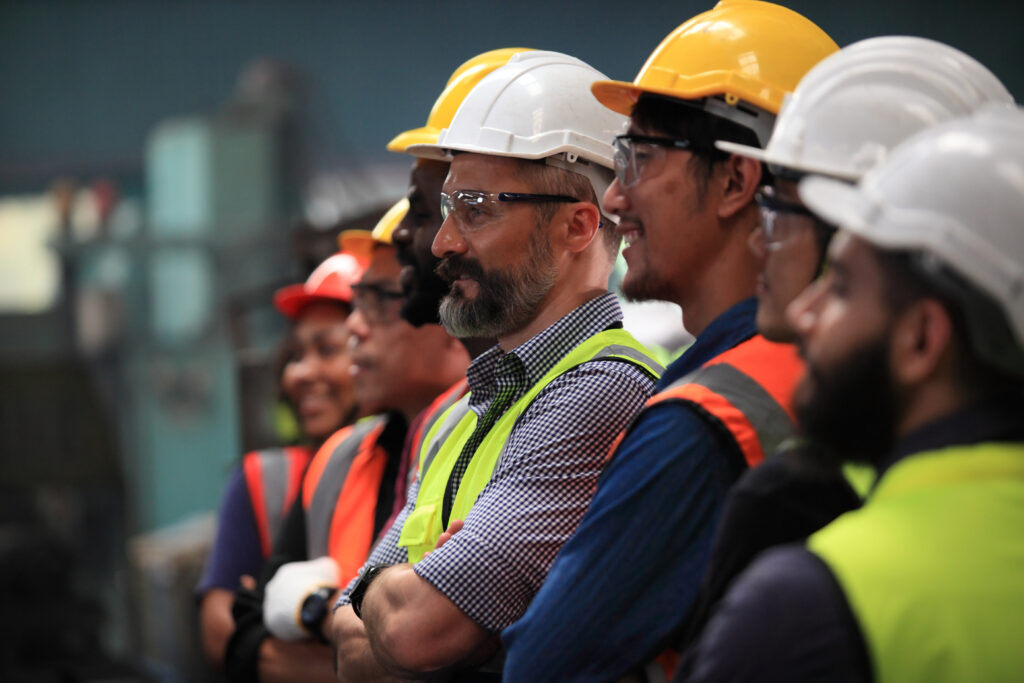1. Business Challenge
The Engine Room recently partnered with a provincial utility to make fundamental changes to their planning and scheduling processes and approach to improve customer experience and work completion.
One of the obstacles to making these changes was at the planning and scheduling team leadership level. The leadership team was largely inexperienced and tended to wait for direction from others instead of determining what they needed to do. To successfully change how the department worked, they would need to change how they led their people.
The following themes were identified:
| Managers & supervisors were often too busy (doing the work of planners & schedulers) to provide coaching to their teams. |
| Managers and supervisors were not providing consistent feedback to their team. |
| Managers and supervisors typically took a reactive approach to issues. |
| Key metrics were not visible to staff or leaders. |
| 1 on 1s and team meetings were sporadic and inconsistent. |
| It was unclear what was important from week to week. |
| Poor performance was not being addressed. |
2. Actions Taken
To improve leadership capability and capacity, The Engine Room’s coaches focused on the following principles with the supervisors and managers being developed in their team interactions:
| Provide clear direction. |
| Position yourself to observe and monitor the work. |
| Provide regular and effective feedback on performance. |
| Acknowledge progress and growth. |
| Build capability within the team instead of doing things for them. |
| Have hard conversations when someone is consistently underperforming. |
To further build leadership capabilities and improve planning and scheduling performance, the following systemic actions were taken across the organization:
| Increase Visibility of Work: It was discovered that employees and leaders lacked easy access to key metrics, the status of work orders being planned and scheduled, and planning details to determine the health of the work in progress. A series of dashboards tailored to different positions were introduced to provide quick access to data and trends and inform employees and leaders on the health of their operations. |
| New Management System: The Engine Room introduced a new business review meeting cadence that required leadership to present and speak about their results, risks, and actions. Leaders leveraged the new dashboards to present their business results while speaking about what was most important and what they planned to do to improve their operation. In addition, leaders were coached on providing effective 1 on 1s and team meetings and established reoccurring meetings with their staff connected to the desired outcomes. |
| Leadership Workshops: A series of interactive workshops were facilitated with leaders to teach them how to create a culture of accountability within their teams. The focus was on providing clear direction, observing and monitoring performance, and providing effective feedback to employees. The approach balanced using dashboards to monitor performance and spending time in the presence of their teams to observe and be available. One of the workshop’s key aspects was helping supervisors ask their teams questions that required them to think for themselves instead of expecting the supervisor to provide the answer. This helped build the capability and confidence within the team. |
| Leadership Coaching: To help leaders learn and implement the new dashboards, management system, and leadership competencies, The Engine Room provided 1 on 1 coaching to key managers and supervisors. The coaching focused on how leaders apply the learning to specific situations. This safe space allowed leaders to be open about their challenges and work together to develop practical actions that improved performance and furthered their growth as leaders. This included having difficult conversations when an employee was underperforming. |
3. Business Results
Through consistent coaching and feedback, the utilities planning and scheduling leadership team fundamentally changed their approach to leading their people, with significant improvements in performance as a result. That included a marked shift from being unaware of the status of work in the planning and scheduling process to seeing their results consistently and using the management system and leadership coaching to improve accountability to results across their teams. Specific changes to leadership practices included:
| Weekly reviews of key trends and metrics with actions to address risks or gaps. |
| Monthly business reviews where leaders provided a concise update on their operation with a proactive view of future risks and plans. |
| Regular coaching conversations between the leader and employees focusing on improving performance. |
| Increased ownership and accountability by leadership of the results and outcomes of the team. The department now sets its own direction. |
| Improved performance and capability from employees with less reliance on the supervisor to solve their problems. |
| Improved KPIs and metrics related to customer service and work completion even as customer work volume increased. For example, reduced customer connection timelines by 35% and decreased customer escalations by 50%. |
By creating a consistent management system, teaching leaders how to create accountability, and providing in-depth coaching to apply and sustain these changes, the department created stronger leaders who now take a proactive approach to delivering value through their people. Their staff became more self-sufficient, allowing leaders to continue to focus on more strategic opportunities and their role in leading the team.




